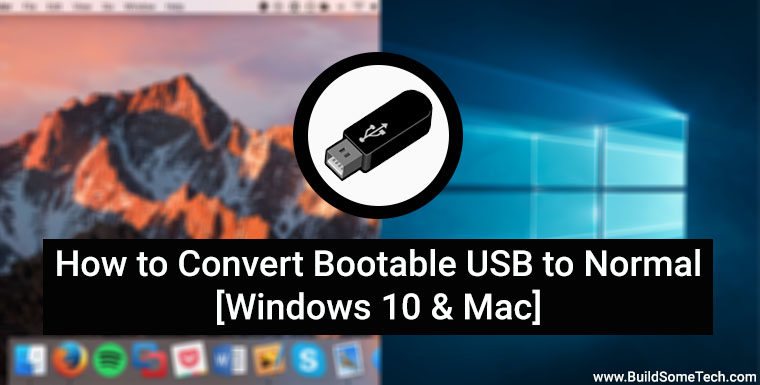

- #Bootable usb on mac for pc install#
- #Bootable usb on mac for pc software#
- #Bootable usb on mac for pc password#
#Bootable usb on mac for pc install#
When Terminal says that it's done, the volume will have the same name as the installer you downloaded, such as Install macOS Monterey.After the volume is erased, you may see an alert that Terminal would like to access files on a removable volume.Terminal shows the progress as the volume is erased.
#Bootable usb on mac for pc software#
The best feature of this software is that, along with creating a bootable USB drive for different operating system types, you can also use this software as Fire BIOS. When prompted, type Y to confirm that you want to erase the volume, then press Return. This tool is the best Bootable USB software windows 2021, and this is the most popular, best, free, open-source and easy software to create a bootable USB drive in windows.Terminal doesn't show any characters as you type your password.
#Bootable usb on mac for pc password#

Once your USB drive is done formatting, right-click it again and click Restore with Disk Image. This will delete all of the files on your drive and prepare it for Hackintosh Catalina. Right-click on the USB drive, and click Format Disk for Mac. * If your Mac is using macOS Sierra or earlier, include the -applicationpath argument and installer path, similar to the way this is done in the command for El Capitan. Find your USB drive on the left-hand column of the TransMac window. Sudo /Applications/Install\ OS\ X\ El\ Capitan.app/Contents/Resources/createinstallmedia -volume /Volumes/ MyVolume -applicationpath /Applications/Install\ OS\ X\ El\ Capitan.app Once the Startup Manager screen appears, release the Option key. Holding that key gives you access to OS X’s Startup Manager. When you hear the startup chime, press and hold the Option key. Press the Power button to turn on your Mac (or Restart your Mac if it’s already on). Sudo /Applications/Install\ macOS\ High\ Sierra.app/Contents/Resources/createinstallmedia -volume /Volumes/ MyVolume Insert the USB boot media into an open USB slot. Sudo /Applications/Install\ macOS\ Mojave.app/Contents/Resources/createinstallmedia -volume /Volumes/ MyVolume Sudo /Applications/Install\ macOS\ Catalina.app/Contents/Resources/createinstallmedia -volume /Volumes/ MyVolume Sudo /Applications/Install\ macOS\ Big\ Sur.app/Contents/Resources/createinstallmedia -volume /Volumes/ MyVolume Sudo /Applications/Install\ macOS\ Monterey.app/Contents/Resources/createinstallmedia -volume /Volumes/ MyVolume If it has a different name, replace MyVolume in these commands with the name of your volume. These assume that the installer is in your Applications folder, and MyVolume is the name of the USB flash drive or other volume you're using. In the new command line window that opens, to determine the USB flash drive number or drive letter, at the command prompt, type list disk, and then click ENTER. Open a Command Prompt window as an administrator. Type or paste one of the following commands in Terminal. Insert a USB flash drive into a running computer.Open Terminal, which is in the Utilities folder of your Applications folder.Connect the USB flash drive or other volume that you're using for the bootable installer.


 0 kommentar(er)
0 kommentar(er)
